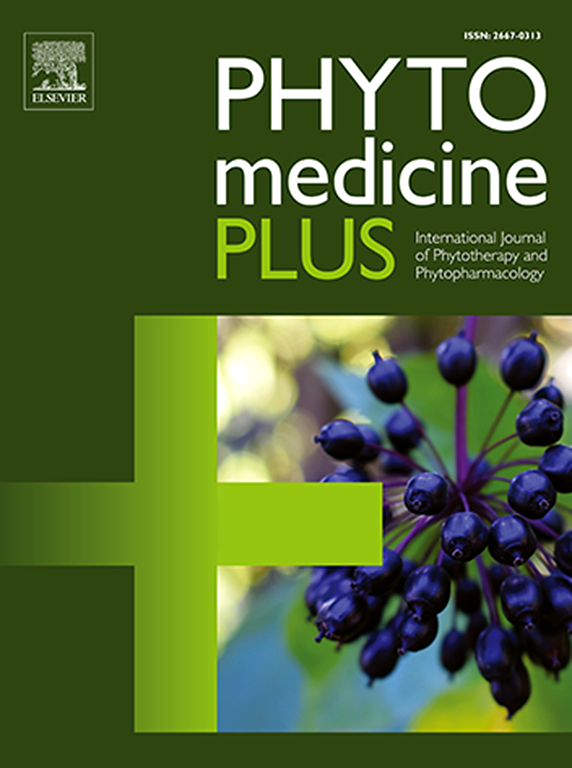Erica属植物化学及药理研究进展杜鹃花科植物
Q3 Pharmacology, Toxicology and Pharmaceutics
引用次数: 0
摘要
背景和目的埃里卡属是埃里卡科的一部分,由多种常绿灌木组成,以其充满活力的花卉展示和对营养贫乏的土壤的适应而闻名。传统上,这些植物因其药理特性而被使用,包括抗炎、抗菌和抗氧化作用。尽管其广泛的民族医学用途,一个全面的审查埃里卡物种的药理学潜力仍然缺乏。研究设计与方法本文综述了Erica属植物的化学、民族药、药理和毒理学特性。利用在线数据库进行了系统的文献检索,以确定埃里卡属的初步研究。关键词包括“Erica”、“抗氧化”、“抗炎”、“毒理学”、“植物化学”、“抗癌”、“降糖”、“抗利尿”、“药理学”、“民族医学”和“细胞毒性”。这项研究涵盖了从1980年7月到2023年2月发表的研究。所有植物的名称都通过“植物列表”(http://www.theplantlist.org/)和PlantZAfrica (https://pza.sanbi.org/)进行验证,而化学结构则通过ChemDraw Ultra和PubChem(https://pubchem.ncbi.nlm.nih.gov/)进行确认。共鉴定出杨梅素、芦丁、木犀草素等60多种生物活性化合物,具有抗炎、抗氧化、抗菌、抗糖尿病、抗癌等作用。此外,土著文化对埃里卡植物治疗各种疾病的传统用途也有记录,突出了该属在民族医学中的重要性。结论本综述为研究人员提供了全面的参考,为进一步深入了解埃里卡属植物的治疗潜力和药理作用提供了指导。本文章由计算机程序翻译,如有差异,请以英文原文为准。

Phytochemical and pharmacological review of Erica Genus (L.) Ericaceae plants
Background and Purpose
The Erica genus, part of the Ericaceae family, consists of diverse evergreen shrubs known for their vibrant floral displays and adaptation to nutrient-poor soils. Traditionally, these plants have been used for their pharmacological properties, including anti-inflammatory, antimicrobial and antioxidant effects. Despite their widespread ethnomedicinal use, a comprehensive review of the pharmacological potential of Erica species is still lacking.
Study Design and Methods
This review presents an overview of the phytochemical, ethnomedicinal, pharmacological and toxicological properties of Erica species. A systematic literature search was conducted using online databases to identify primary studies on the Erica genus. Keywords such as “Erica,” “antioxidant,” “anti-inflammatory,” “toxicology,” “phytochemistry,” “anticancer,” “antidiabetic,” “antidiuretic,” “pharmacology,” “ethnomedicine” and “cytotoxicity” were employed. The search covered studies published from July 1980 to February 2023. All plant names were verified through "The Plant List" (http://www.theplantlist.org/) and PlantZAfrica (https://pza.sanbi.org/), while chemical structures were confirmed using ChemDraw Ultra and PubChem(https://pubchem.ncbi.nlm.nih.gov/). Over 60 bioactive compounds, including myricetin, rutin and luteolin, were identified, exhibiting anti-inflammatory, antioxidant, antimicrobial, antidiabetic and anticancer properties. Additionally, traditional uses of Erica plants by indigenous cultures in treating various ailments were documented, highlighting the importance of this genus in ethnomedicine.
Conclusion
This review provides a comprehensive reference for researchers, offering insights into the therapeutic potential of Erica species and guiding future investigations into their pharmacological benefits.
求助全文
通过发布文献求助,成功后即可免费获取论文全文。
去求助
来源期刊

Phytomedicine Plus
Medicine-Complementary and Alternative Medicine
CiteScore
3.70
自引率
0.00%
发文量
178
审稿时长
81 days
期刊介绍:
 求助内容:
求助内容: 应助结果提醒方式:
应助结果提醒方式:


